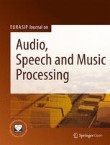Music selection interface for car audio system using SOM with personal distance function
Devices such as smart phones and tablet PCs of various sizes have become increasingly popular, finding new applications, including in-car audio systems. This paper proposes a new car audio system. In the archi...
